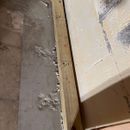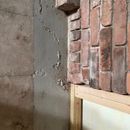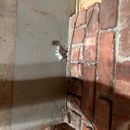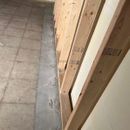Waterproofing High-Humidity Basement
I have a 2000 square foot home with a finished basement and have started basement renovation of an existing space and need some advice about waterproofing to make sure I do it right. I had some water puddling in the corners, wall efferoscenct, fireplace brick, moisture on the concrete block walls, and basement humidity. My humidifier runs much of the day in the spring and summer and need to be emptied every couple of days.
I painted the interior of my walls and one foot of my floor with Hydro-Seal 75 waterprrofing Epoxy and it did not solve the problem. After painting, some of the painted flaked off the walls and the floor started breaking up crumbing floor within the the 12″ and efferoscent continued.
Next, after reading the site I replaced my gutters and made sure they drained out 10′ from the house. The water puddling went away and the floor seems to have stopped crumbling, But, still getting moisture evident by the floor efferoscent expecially after spring rains. I have talked to basment waterproofers and they are all over the map and seem to have very different opinions or maybe just want a sale.
Waterproofer #1 – Do Nothing
Do nothing since the problem is not bad enough. Recommended exterior grading and said don’t worry about it waterproofing. Also invest in a commercial dehumidifier and patch floor.
Waterproofer #2 – Interior Drain ($6000 – $7,500)
Told me a interior would fix the issue with a sumpump. Even said this method should fix my efferoscent & humidity would go away.
Waterproofer #3 – Exterior Drain ($10,000 – $15,000)
Said the exterior is the best and only way to fix the issue with a drain. Told me my home is old built in the mid 70’s and probably has not concrete tar or existing drain. Needs to install drain on two walls to solve issue.
What would you recommed on how to approach this since I do not have standing water? Your opinons are grealy appriciated.
GBA Detail Library
A collection of one thousand construction details organized by climate and house part













Replies
You don't have standing water *right now*.
Interior and exterior drains certainly each have their pros/cons. If we disregard price, and only focus on the best solution, it's easily the external work, where the foundation is excavated, the foundation cleaned, waterproofed, and drained to daylight if possible. That keeps the water from ever entering the basement in the first place, and solves a lot of the moisture / humidity problems. It may not eliminate the humidity problem, because water may still wick through the footing / basement slab if the water table is high, or if there's no vapor barrier beneath the slab, which is likely missing given the period of construction. I wouldn't only excavate two sides. It's better to solve the problem once and forget about it. In for a penny in for a pound.
The interior solution can work to, but it relies on constant active mitigation rather than a largely passive mitigation. The usual approach is a dimple mat with an interior drain / sump system, likely what waterproofer #2 suggested, and in many cases is the better option financially, even more so if access is limited.
The do nothing option is only really an option if you don't want to use the space, and pay higher utility bills.
Im all for doing the proper job from the exterior. Excavate, install perforated drainage piping at the footing level (the piping has to take the water somewhere that makes sense) , damp proof the foundation wall, back-fill with drain rock to the top. If your rain leaders do not tie into a separate system then the roof water will eventually make it to the foundation drainage piping.
Tying into a municipal storm is best, but if you do not have that option you are left with some form of sump and pump system (which should have a high water alarm) or drain to daylight if you have grade.
I am doing the same to my house right now and yes, it is expensive.
If you go at it from the exterior, be sure to read this article: Dealing with Basement Water from the Outside. Conversely, there is this option: Dealing with Basement Water from the Inside.
I would only do #3, the exterior waterproofing. Spend the money wisely so you don’t have to worry about it in the future. As for dealing with moisture through the soap, there are different ways to address it. Several have been discussed on this site if you research it. Good luck!